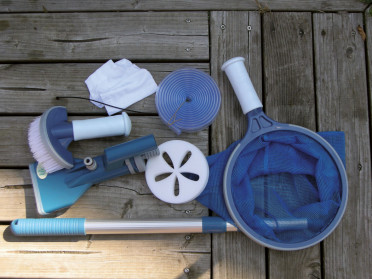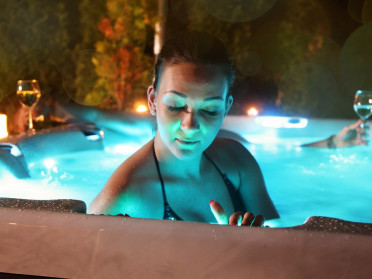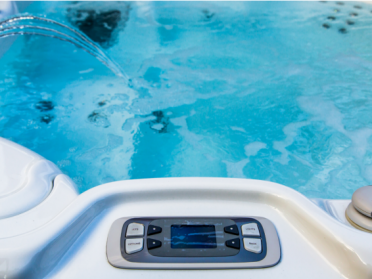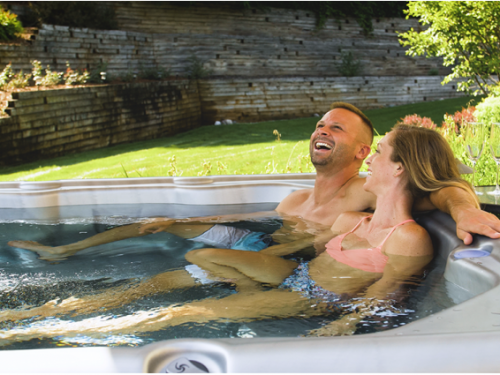
The ‘Eco’ Spa: A Guide to Hot Tub Energy Efficiency
Category : Wellness
While dreaming of evenings of relaxing in your backyard while warm water soothes your sore muscles, perhaps it’s also time to think about finding the best hot tub for your budget.
A ‘Green’ Hot Tub: Rumor or Reality?
For many people, the initial hot tub cost seems reasonable, but they worry about the electric bills to follow. However, you may be surprised to learn that today’s energy efficient hot tubs actually cost very little to run. Here are some factors to consider when shopping for energy-efficient hot tubs.
Insulation
Insulation is the most important factor for the energy-efficiency of a hot tub. Insulation creates a barrier between the shell’s surface and the ambient temperature outside. This thermal blockade helps maintain water temperature and allows the heater and pumps to run more efficiently.
Hot tubs range widely in cost and quality of materials, including the amount of insulation installed. Some lower-end models may have no insulation at all. Moving up in quality, partial foam insulation is placed between the hot tub and cabinet. While this option is better than no insulation at all, it is not the ideal choice because partial foam leaves gaps that allow heat to escape.
Full foam insulation is the best at maximizing energy efficiency. Foam is sprayed to fill the interior of the cabinet, providing structural support and using half the energy of a partial foam insulated tub. The downside to a fully insulated tub reveals itself when hot tub repairs are needed. The density of insulation makes hot tub equipment more difficult to access.
You can upgrade either insulation option by installing an affordable eco-friendly blanket or thermal wrap against the inside of your hot tub cabinet. These energy-saving blankets are often made of thin layers of air-bubble lined plastic that can be trimmed to fit your hot tub. The blanket provides weather resistance, can prevent cold winter air from blowing in, and prevents heat from escaping. Expect to pay more for well insulated tubs, but enjoy energy savings on each electric bill.
Heat Retaining Covers
A cover helps the overall efficiency of a hot tub by cutting down on heat loss (remember, as science class teaches, heat rises). Even a hot tub surrounded by thick insulation will lose heat quickly if left uncovered. The best covers consist of dense foam wrapped with a waterproof layer, lined with a heat reflecting material, and covered by marine-grade vinyl or fabric.
In a cold climate, aim for a two-pound foam cover. While hot tubs in warmer climates might not experience the same level of heat loss as hot tubs in cold climates, covering the tub with an insulated topper still works to improve energy efficiency. Cover experts say the more layers of insulation, the better. For added insulation, float a thermal cover on the surface beneath the hot tub cover.
Covering your hot tub also provides an important safety function, keeping curious children or animals out of the water. The cover reduces maintenance as well, keeping debris and rain/snow out of your hot tub. For safety and cleanliness, as well as hot tub energy efficiency, make sure that your hot tub cover is in good condition and fits snugly on all corners of the tub.
Heater and Pumps
Having a well-maintained heater and pumps contributes to the overall enjoyment of a hot tub. Toasty water and jets provide a soothing massage. But this only happens when the heater and pumps are working properly. Maximizing a pump’s performance and endurance is an important step towards optimal energy consumption in your hot tub.
Other ways to improve heater and pump efficiency include installing a small recirculation pump that continually filters water, allowing the larger pumps to stay off until needed, and turning off all blowers when you exit the tub.
It might seem obvious, but another way to reduce energy usage is to only run your heater when you use your hot tub. Be realistic about how often you take a backyard plunge, and turn up the heat only on those evenings. When traveling, turn the heater down more to save on your energy bill, but remember to leave some heat running at all times during winter weather to prevent pipes and pump motor from freezing.
Too Hot for the Hot Tub?
After installing a little slice of bliss in your backyard, it’s tempting to keep that hot tub cranked up to high heat at all hours so that it’s ready for enjoyment at any moment. But this kind of indulgence can heat up your energy bill as well. To enjoy your hot tub without using excessive electricity, it’s important to think about your heating schedule strategically:
- Lower your hot tub’s temperature setting by a few degrees when not in use. This saves energy while allowing for quick reheating should you want a soak. If away from your hot tub for an extended time, lower the temperature.
- You may want to turn your heater off in the summer if you live in a warm climate and prefer cooler soaks to cool off.
Warning: Children, pregnant women, and people with certain health conditions cannot tolerate high heat. They should receive medical advice from a licensed physician before using a hot tub.
Peak Efficiency
For peak hot tub efficiency, you’ll want to invest in a well-manufactured tub, place it in an area with a windbreak to shield your hot tub from chilly gusts of air, and then take steps to keep energy usage minimal while maintaining an optimal water temperature. You’ll definitely want to do your research and buy from a reputable hot tub dealer, but peak energy efficiency involves a simple four-part formula:
- Buy a well-built acrylic or even stronger high-density polyethylene tub. It should be insulated with partial or full foam insulation and lined with an eco-friendly blanket or thermal wrap.
- Choose a high density cover to keep heat from evaporating out of your hot tub. The cover should have a layer of thick foam wrapped in a waterproof layer and covered with vinyl. Float a thermal cover on the surface of the water for added insulation.
- Pay attention to the physical condition of your hot tub. Keep your heater and pumps in good functioning order. Install a small recirculation pump to continually filter water, keeping the large pumps from working as much.
- Use restraint with how often you run your heater. Keep your hot tub at a maintenance temperature and only keep it at a high heat it on days you know you’ll use it. Turn your heater down when going away from home for several days or more.
Cost
Hot tub costs vary, from budget models to luxury editions, depending on the features and quality of construction. Purchasing a premium or luxury model from a hot tub store may cost more initially, but superior insulation will reduce energy usage and a generous warranty will mean that you won’t have to worry about repair costs for years.
Before you enjoy your first backyard soak, you’ll need to spend a moderate amount on setup costs including building a deck or foundation for your hot tub and hiring a delivery crew and electrician. Operating costs for a hot tub include energy and water usage, chemicals for the water, and parts like filters that may need regular replacements.
With setup costs fairly fixed, many consumers decide to invest in a durable, energy efficient hot tub that will provide a relaxing experience for years to come. Loaded with features like powerful jets, Bluetooth speakers, and color-changing lights, a premium hot tub can become a multi-sensory way to unwind as you let stress flow away with the bubbles; and that is priceless!
Related Products
More Maintenance Tips
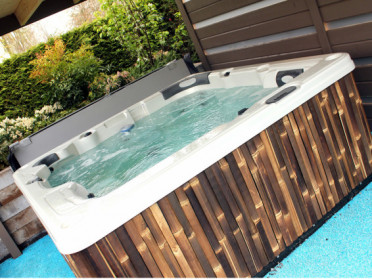
Construct
How to Choose the Location of Your Spa
In the rush of excitement after a spa purchase, it’s important to remember it’s not just what’s inside the spa that will perfect your experience — it’s also what’s above, below and beside it. Be prepared to consider everything from weather to weight during your contractor’s pre-installation visit.
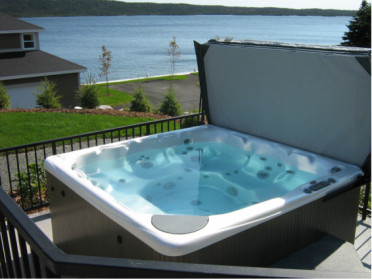
Wellness
How to Drain and Fill Your Hot Tub
Whether you prefer an early-morning spa session to mentally prepare for a busy day, or a late-night soak in the warm, soothing waters to help you sleep better, there’s one thing we can all agree on: No matter the time of day, when you step into your hot tub, the water needs to be sparkling clean in order to truly enjoy the experience.

